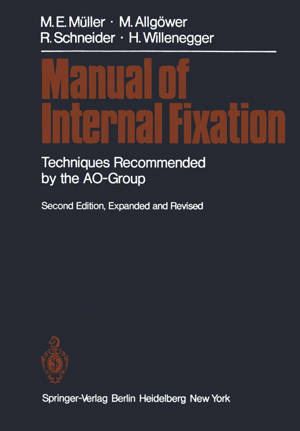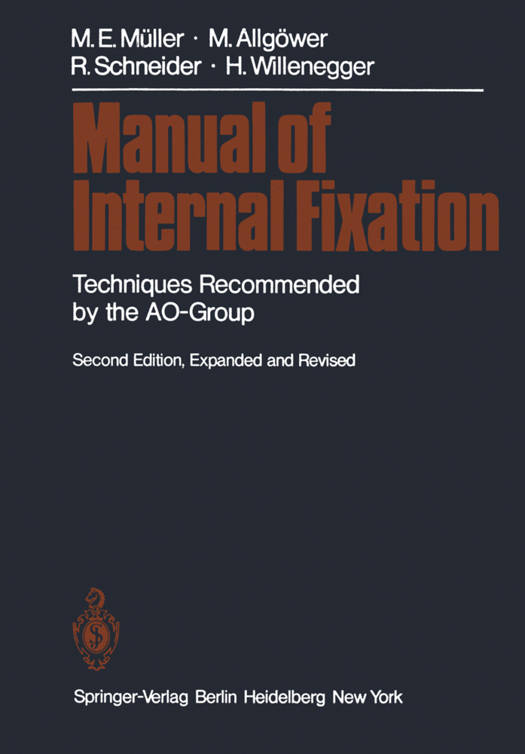
- Afhalen na 1 uur in een winkel met voorraad
- Gratis thuislevering in België vanaf € 30
- Ruim aanbod met 7 miljoen producten
- Afhalen na 1 uur in een winkel met voorraad
- Gratis thuislevering in België vanaf € 30
- Ruim aanbod met 7 miljoen producten
Zoeken
Manual of Internal Fixation
Techniques Recommended by the Ao Group
Maurice E Müller, Martin Allgöwer, Robert Schneider, Hans Willenegger
Paperback | Engels
€ 147,95
+ 295 punten
Omschrijving
The first part of this manual deals with the experimental and scientific basis and the principles of the AOjASIF method of stable internal fixation. It deals with the function and main use of the different AO implants, the use of the different AO instruments, and with the essentials of the operative technique and of postoperative care. It also discusses the handling of the most important postoperative complications. The second part deals at length with the AO recommendations for the operative treatment of the most common closed fractures in the adult. This has been organized in anatomical sequence. The discussion of the closed fractures is followed by a discus- sion of open fractures in the adult, then by fractures in children and finally by pathological fractures. The third part presents, in a condensed fashion, the application of stable internal fixation to reconstructive bone surgery. 1 GENERAL CONSIDERATIONS 1 Aims and Fundamental Principles of the AO Method The Chief Aim of Fracture Treatment is the Full Recovery of the Injured Limb In every fracture there is a combination of damage to both the soft tissues and to bone. Immediately after the fracture and during the phase of repair, we see certain local circulatory disturbances, certain manifestations of local inflammation, as well as pain and reflex splinting. These three factors, that is, circulatory disturbances, inflammation and pain, when combined with the defunctioning of bone, joints and muscle, result in the so-called jl'acture disease.
Specificaties
Betrokkenen
- Auteur(s):
- Vertaler(s):
- Uitgeverij:
Inhoud
- Aantal bladzijden:
- 409
- Taal:
- Engels
Eigenschappen
- Productcode (EAN):
- 9783642965074
- Verschijningsdatum:
- 16/02/2012
- Uitvoering:
- Paperback
- Formaat:
- Trade paperback (VS)
- Afmetingen:
- 210 mm x 279 mm
- Gewicht:
- 957 g

Alleen bij Standaard Boekhandel
+ 295 punten op je klantenkaart van Standaard Boekhandel
Beoordelingen
We publiceren alleen reviews die voldoen aan de voorwaarden voor reviews. Bekijk onze voorwaarden voor reviews.








